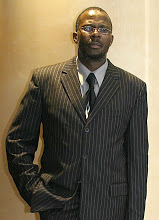XENOPHOBIC tendencies and its attendant heinous and shameful violence against the most vulnerable (women & children) remain a critical challenge to the wider civil society, not just in the Republic of South Africa but all over the African continent.
Over the Africa Day month, in South Africa May 11, 2009 is regarded as the 'Anniversary of Shame' because it is the day our country witnessed the most shameful and barbaric violence meted to a fellow African by his ilk since the demise of aparheid.
Statistics reveal that some 62 people were killed in a wave of xenophobic attackes that started from the Alexander Township's (north of Johannesburg) Ramaphosa informal settlements and spread throughout the country.
Who can ever dare forget that gruesome image of that Mozambique/an national Ernesto Alfabeto Nhamuave engulfed in flames that was beamed live around the world on television sets?
Nhamuave's burning body and the SAPS policewoman dousing the flames consuming the corpse with a fire extinguisher became the 'scene that shocked the world' about barbarism perpetrated by fellow African people against their own ilk.
However, the South African xenophobic orgy could not be worst than the ongoing internecine violence that was presently being perpetrated by rebel groups and was ravaging the Eastern Congo.
What had started as Tutsi versus Hutu tribal groups in 1994 over political control in Kigali, Burundi has decimated the enite civil society into a ghost country.
This week Al Jazeera previewed (flighted) the film 'Witness:Fighting for Survival' which showed horryifying images about xenophobia and blatant women abuse in the district of Baraka, Fiz region in the Eastern Congo.
Filmmaker Ilse van Velzen said she had decided to create what she calls "mobile cinema as an education facility to empower, capacitate and uplift the vulnerable people about the dangers and long-term psychological effects of xenophobic violence throughot the world".
"The survivors and perpetrators reminds us of the civil war era in the Democratic Republic of Congo in which more than 80 000 women were sexually abused after being abondoned by their husbands and fathers fleeing from the killer rival mobs" outlined van Velzen.
According to her, the film depicts the violence, conflict and human disaster in its 'realist or truest form' as the Congolese rape victims tell their stories about the trauma, pain, dissullionment and hopelessness they were going through in their homeland while the First civilised world kept quite.
"We're making this films in order to educate communities about how paramount xenophobia can be in a country's wellbeing. We want to send a strong warning whereby other tribal groups raped fellow counterparts and those of foreign descent with impunity.
Many women we attempted to interview decided to keep quite (not tell their experiences) because rapein broad daylight.
Congolose women find it difficult to tell their story to their communities because it is taboo.
Kids as young as 3-years were being raped by different rebel groups whereby they were (rightly or wrongly) accussed for committing petty offences, such as stealing 'palm nuts' and were sexually abused as punishment.
What lesson can our own South African authorities learn from these xenophobic tendencies reported from the Gulf Lakes?
Recently, the Consortium for Refugees and Migrants in South Africa was qouted as saying 'very little had been done by the government to address the causes of xenophobic violence as vigilantism remains common with individuals taking law into their hands'.
And the Human Rights Commission spokesperson Vincent Moaga argues that the country still faces serious challenges related to xenophobia such as countering unfounded perceptions that foreign nationals were largely to blame for a variety of social ills, including crime and unemployment (The Mercury May 12,2009).
Quite newsworthy, people must be informed that Westrn Cape High Court has set down 26 May 2009 to hear an 'Eviction Order application made by the Cape Town City authorities against last-year's xenophoia violence '461 displaced foreigners' that were housed at Blue Waters temporary camp, near Youngsfield military base in Wynberg.
The central question posed to the wider South African civil society is how do we address the animosity to our fellow African sisters and brothers that were flocking south to our 'Rainbow Nation' in search of employment, shelter and food since records show that both indigenous and assylum-seekers were vulnerable both in their countries and also in the neighbouring South Africa?
ENDS
Friday, May 15, 2009
Subscribe to:
Comments (Atom)


